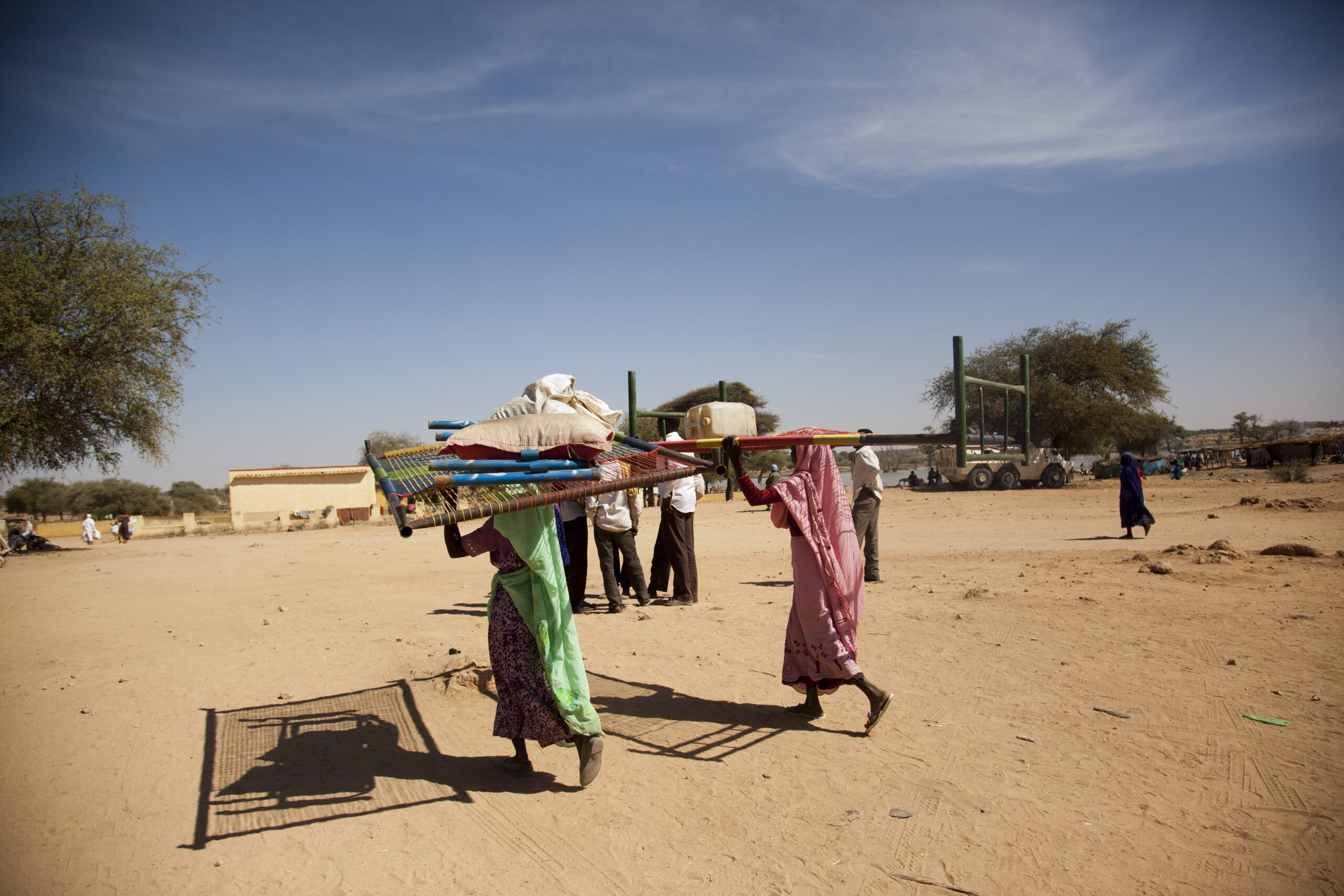More aid reaches displaced in Darfur’s Jebel Amir
February 21, 2013 (KHARTOUM) – There has been improved humanitarian access during the past week to displaced people in North Darfur’s conflict-affected Jebel Amir area, according to the United Nations’ humanitarian affairs body.

A report prepared by the Office for the Coordination of Humanitarian Affairs (OCHA) says needs assessments and monitoring missions by humanitarian organisations have been carried out in the Kebkabiya, Saraf Omra, Garrah Az Zawia and El Sireaf localities. Relief supplies have now been delivered by road to almost all locations affected by the conflict, although security remains a major concern.
Violent inter-tribal clashes between members of the rival Arab Northern Reizegat (Aballa) and Beni Hussein tribes, fighting for control of the region’s gold mines has sparked a humanitarian crisis, displacing about 100,000 people, according to the Sudanese government’s Humanitarian Aid Commission (HAC).
The UN resident and humanitarian coordinator in Sudan, Ali Al-Za’tari, was received in El-Fasher on Wednesday by the North Darfur governor who praised the efforts exerted by UN agencies to reach affected civilians following the tribal clashes and pledged to protect aid workers.
Sudan’s humanitarian commissioner, Suleiman Abdel Rahman, who also attended the meeting, reiterated the commitment of his commission to facilitate the activities of aid groups in the different areas in line with new directives on the humanitarian field.
North Darfur continues to witness a number of tribal conflicts and remains one of the most volatile states in the region, with different rebel groups regularly clashing with forces from the Sudanese army.
The latest crisis, which unfolded in January, has resulted in the largest displacement of people in Darfur in recent years, with the figures for the past month higher than the total numbers displaced in 2012.
SIGNIFICANT BREAKTHROUGH
In a significant breakthrough for aid organisations working on the ground, the road from Saraf Omra to El Sireaf has been opened for humanitarian access following consultations between local authorities in both areas, as well as tribal leaders of the Beni Hussein and Aballa groups.
Aid agencies previously claimed the road’s closure was blocking the delivery of relief supplies and preventing assessment teams from accessing affected areas.
However, both the local authorities and tribal leaders have stressed the need to ensure that assistance reaches all people affected by the conflict, regardless of their tribe.
Moves to improve humanitarian access in the region follow calls by the United States for the Sudanese government to grant UN agencies “unrestricted access to all areas of Darfur” to deliver aid to needy civilians in the region.
In a statement extended to Sudan Tribune following the violent outbreak in Jebel Amir, Oxfam warned the region was facing a potential humanitarian catastrophe due to inadequate shelter, poor sanitation and the possible spread of disease, adding that aid agencies were struggling to meet the needs of those affected by the crisis.
According to the HAC office in Kebkabiya, the number of people displaced from Jebel Amir taking refuge in the locality as of 14 February had increased from 1,000 to about 7,000 people, with figures constantly in flux, due to the movement of displaced people from other areas into Kebkabiya locality.
DISPLACED FLEE CONFLICT
In Saraf Omra, some 2,000 people displaced from the Jebel Amir area have settled in three locations, according to a needs assessment team that visited the area on 14 February. However, community leaders claim that the true numbers of displaced are about 18,500, the majority of which come from the Northern Reizegat tribe.
In West Darfur, about 4,600 displaced people who returned in 2011 to Hashaba Dadi in the state’s Kerenik locality reportedly fled the village, leaving just 400 people behind, amid fears of further attacks after violence erupted in Jebel Amir, government authorities said.
Meanwhile, Some 3,000 people who had been living and working in the Jebel Amir gold mines have arrived in South Darfur’s Bulbul Abu Jazo area. According to recent humanitarian assessments, those displaced are being isolated by the host community, who fear the possible transmission of yellow fever, as the displaced population has not been vaccinated against the disease. In response, the World Health Organisation (WHO) and the state’s ministry of health are planning to conduct a vaccination campaign in the area.
The OCHA report said humanitarian agencies had delivered non-food aid supplies to relief supplies to 21,700 people, while about 65,000 people have been assisted with water and sanitation services, adding aid agencies were working to address the most urgent needs of those displaced.
The United Nations has estimated that around 300,000 people have died during the 10-year conflict in Darfur, while some 2 million people have been displaced.
(ST)
